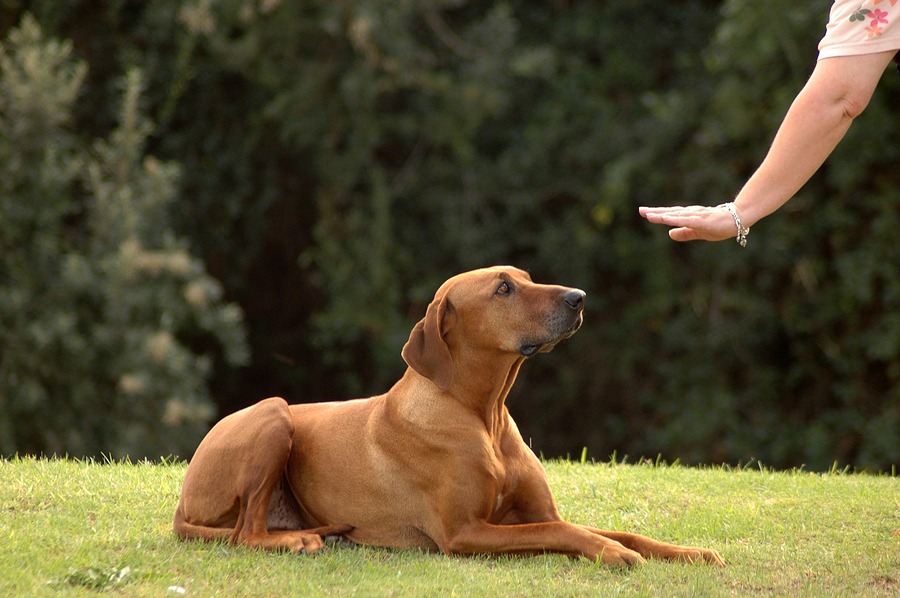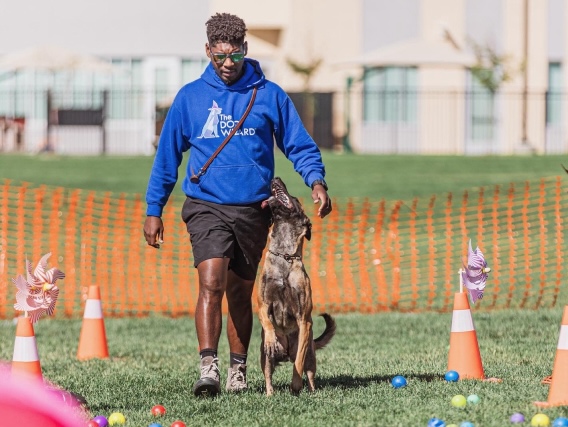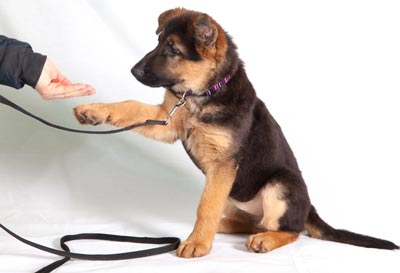Essential Tips for Successful Dog Training: A Guide for Beginners
Essential Tips for Successful Dog Training: A Guide for Beginners
Blog Article
Leading Canine Educating Techniques Every Proprietor Should Know

Positive Reinforcement Techniques
Using favorable reinforcement techniques is necessary for efficient dog training, as it cultivates a relying on bond between the trainer and the dog. This technique concentrates on rewarding preferable actions instead of punishing unwanted ones, producing an environment favorable to learning. Rewards can include treats, praise, or playtime, which encourage pets to repeat the actions that earn them these benefits.

Furthermore, this method improves the dog's interest for training sessions. When canines link training with positive experiences, they are a lot more engaged and receptive. Past immediate therapy, positive reinforcement motivates a collaborative connection in between the canine and fitness instructor, reducing anxiousness and fear
To make best use of effectiveness, it is crucial to provide incentives promptly, making sure the pet dog attaches the behavior with the reinforcement. Basically, favorable reinforcement methods not just generate better-trained pets but additionally advertise a harmonious partnership between pet and owner.
Remote Control Training Technique
The remote control training method is an extremely reliable strategy that develops upon the principles of favorable reinforcement by adding a distinctive sound to mark preferred behaviors. This technique uses a little handheld tool that produces a clicking noise, permitting instructors to connect with their dogs in a prompt and clear way. When a canine carries out a behavior that the proprietor wishes to encourage, the remote control is activated, followed by a benefit, normally in the kind of deals with or appreciation.
The key to successful clicker training exists in uniformity and timing. It is vital to click at the specific minute the desired actions takes place, guaranteeing that the dog links the noise with the action and the subsequent incentive. This technique not only boosts communication but likewise promotes a more powerful bond between the pet dog and the proprietor, as it urges interaction and interaction throughout training sessions.
Remote control training can be used to a selection of actions and commands, from fundamental obedience to a lot more complicated techniques. Its flexibility and performance make it a popular technique amongst expert instructors and pet owners alike, leading the means for a receptive and trained canine buddy.
Chain Training Basics
Effective chain training is important for guaranteeing a risk-free and enjoyable walking experience for both pet dogs and their owners. A level collar may work for some canines, while others might benefit from a harness that lowers pulling.
Introduce your canine to the leash gradually, allowing them to explore it in a comfy check that environment. This involves rewarding your dog for strolling close to you instead than pulling in advance.
If your pet starts to pull, stop strolling immediately. Wait until they go back to your side prior to returning to. This instructs them that pulling does not lead to progress. In addition, technique different walking settings to aid your pet dog adapt to diversions.
Regular technique will strengthen your canine's understanding of leash rules. Keep in mind that chain training is an ongoing procedure; persistence and consistency will certainly yield the most effective results, cultivating a favorable experience for both you and your canine companion.
Socializing Methods
Socialization is a crucial element of canine training that need to ideally start throughout puppyhood but can be beneficial at any kind of age. Effective socializing helps pet dogs develop self-confidence and reduces the probability of behavioral problems. To apply successful socializing strategies, subject your dog to a range of environments, individuals, and various other animals.
Begin with regulated settings, such as pup classes or organized playgroups, where young pets can communicate securely. Gradually introduce your pet dog to new experiences, consisting of various noises, surface areas, and tasks. Guarantee these experiences are gratifying and favorable to establish a have a peek here feeling of safety.
For adult dogs or those lacking exposure, start with low-stress situations. Short, favorable interactions with calm canines and pleasant people can develop favorable organizations. Utilize treats and praise to enhance preferable actions during these experiences.

Uniformity and Persistence
Acknowledging the significance of uniformity and perseverance in canine training is important for achieving long-term outcomes. Educating a canine is a progressive procedure that requires an organized technique and unwavering commitment from the owner. Each command or habits should be enhanced continually to assist the canine recognize what is anticipated of them. Inconsistent training can bring about confusion, making it challenging for the dog to comprehend actions or commands, eventually preventing progression.
In addition, persistence is a critical element of reliable training. Dogs, like human beings, find out at their own rate. Some may understand ideas rapidly, while others may take much longer. It is crucial for proprietors to stay helpful and calm, strengthening favorable behavior without resorting to frustration or punishment. This fosters a trusting connection in between the dog and proprietor, encouraging a much more passionate and prepared student.
To grow consistency and persistence, establish a regular training routine, use the very same commands, and ensure that all relative use the very same training principles - Dog training. By doing so, you develop a stable environment helpful to discovering, enabling your canine to thrive and develop right into a well-behaved companion
Verdict
In conclusion, reliable dog training methods, such as favorable support, remote control training, and appropriate leash training, are essential for promoting a healthy and balanced owner-dog relationship. Furthermore, executing socialization approaches and preserving uniformity and persistence throughout the training process adds substantially to a dog's total wellness. By incorporating these techniques, dog proprietors can facilitate the growth of well-adjusted, obedient pet dogs, eventually boosting the high quality of life for both the dog and the proprietor.
Amongst the most noticeable techniques are favorable reinforcement, remote control training, and leash training, each offering distinct benefits that add to a well-behaved pet. As we explore these basic strategies, it ends up being obvious that understanding their my review here nuances can substantially influence the training experience and the pet's total actions.Making use of positive reinforcement strategies is important for efficient pet training, as it cultivates a trusting bond between the pet dog and the instructor.In conclusion, efficient pet training techniques, such as positive support, remote control training, and proper leash training, are necessary for cultivating a healthy owner-dog connection. By incorporating these approaches, canine owners can promote the development of well-adjusted, obedient family pets, inevitably improving the high quality of life for both the proprietor and the dog.
Report this page